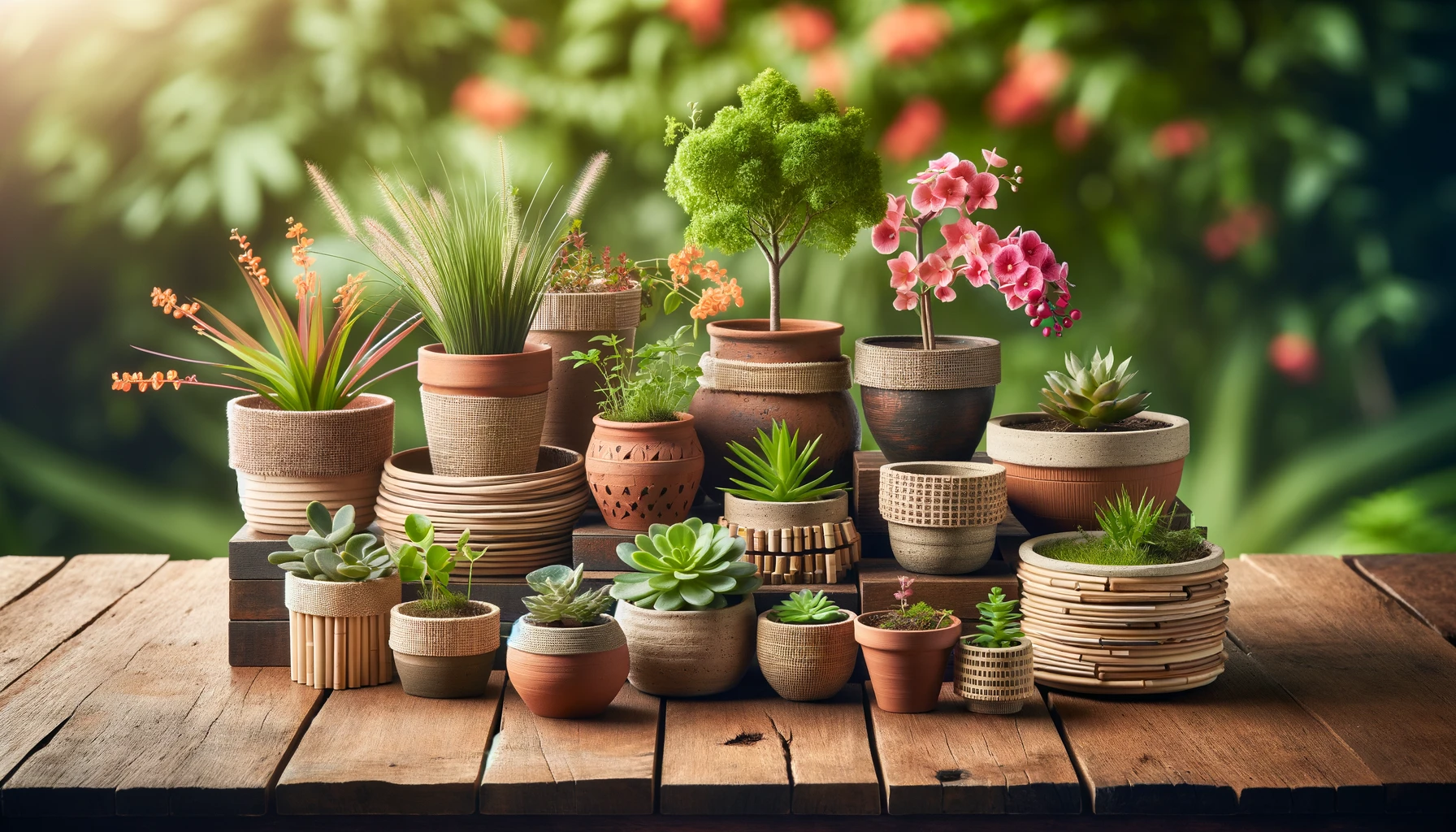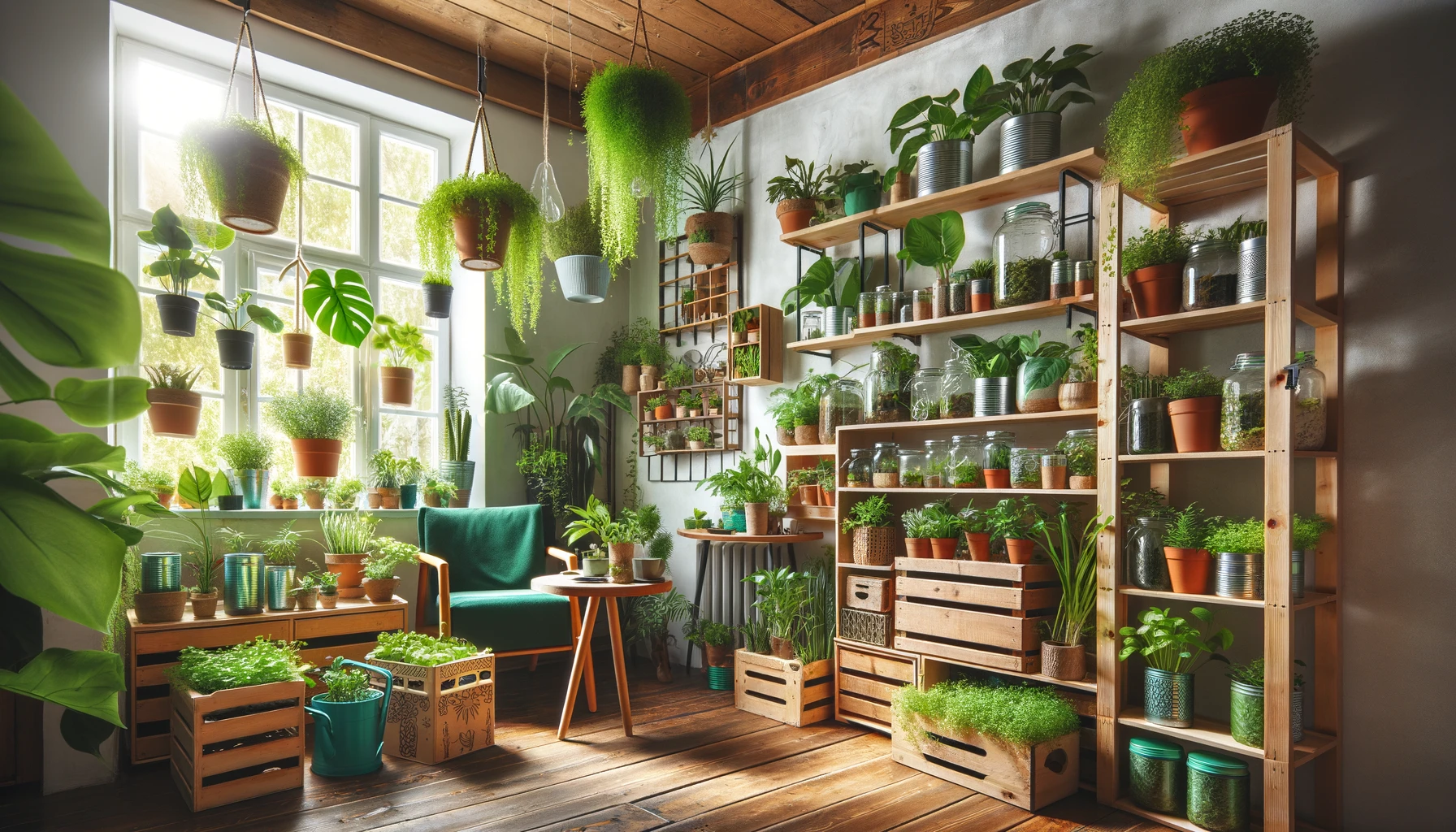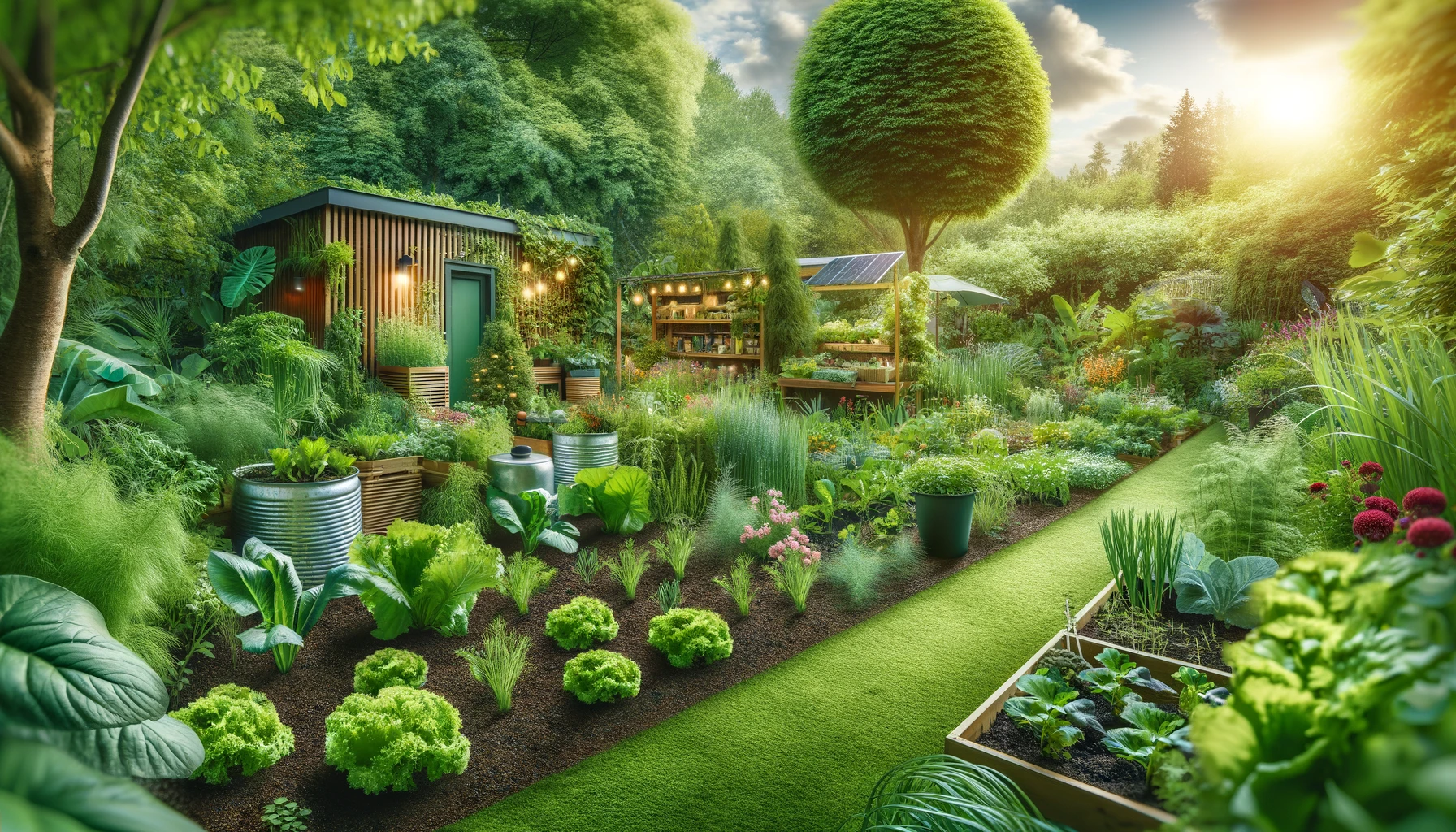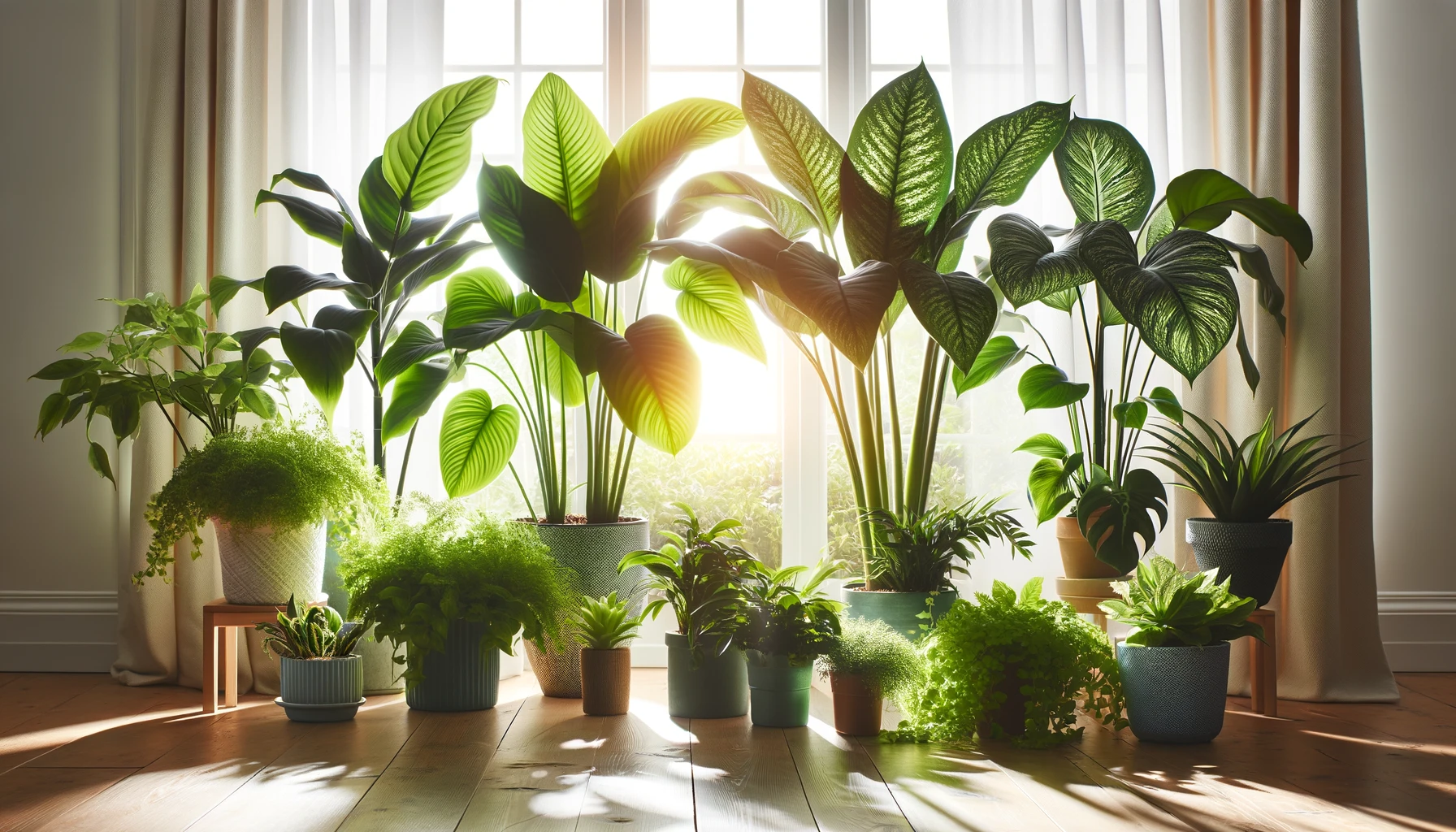This post contains affiliate links. If you buy something from one of our links we may earn a commission. Thanks
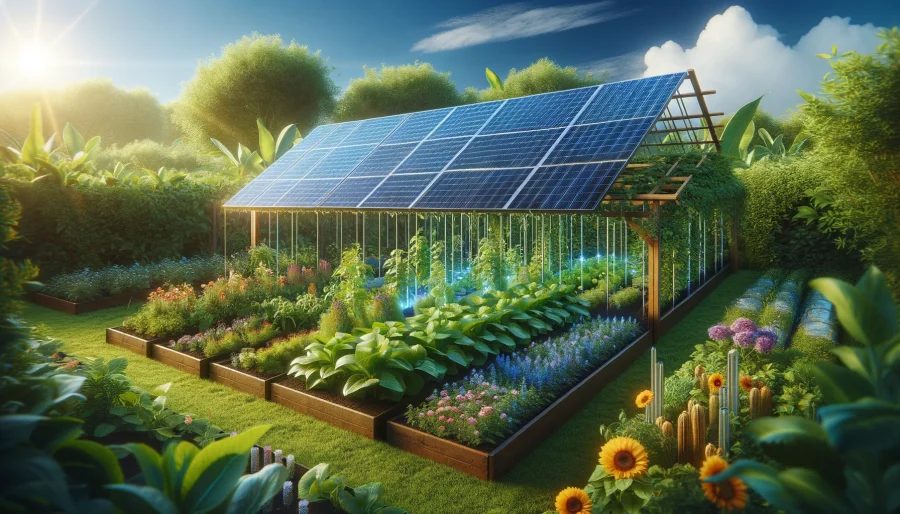
Discover eco-friendly renewable energy ideas for gardens, from solar panels to wind turbines, and learn how to power your garden sustainably.
Renewable Energy Ideas for Gardens
Key Takeaways:
- Renewable Energy Ideas for Gardens include utilizing solar panels to power grow lights and irrigation systems,
- Installing small wind turbines for electricity generation.
- These eco-friendly solutions help reduce carbon footprint and promote sustainability in gardening.
- Other less common methods may include Geothermal Energy Applications, Hydropower and Biogas Utilization
Welcome to the world of renewable energy ideas for gardens! Embrace sustainability by exploring innovative solutions like solar panels and wind turbines to power your garden.
Join us on this green journey to create an eco-friendly oasis right in your backyard.
Introduction: Renewable Energy Ideas for Gardens
Renewable energy is becoming increasingly important in gardening, offering a sustainable way to power garden systems while reducing environmental impact.
This guide explores various renewable energy sources and their applications in gardens, helping you create an eco-friendly space that harnesses the power of nature.
Importance of Renewable Energy in Gardening
Renewable energy sources like solar, wind, and geothermal power offer a sustainable alternative to traditional fossil fuels.
By incorporating these energy sources into gardening practices, gardeners can reduce their carbon footprint, lower energy costs, and contribute to a healthier environment.
Renewable energy in gardens also promotes self-sufficiency and resilience, ensuring that garden systems can operate independently of the grid.
Overview of Different Renewable Energy Sources
There are several renewable energy sources suitable for garden applications:
- Solar Power: Utilizing solar panels to capture sunlight and convert it into electricity for powering garden lights, irrigation systems, and other equipment.
- Wind Energy: Harnessing wind power through small-scale turbines to generate electricity for garden use.
- Geothermal Energy: Tapping into the earth’s natural heat to regulate temperature in greenhouses or for heating garden structures.
- Hydropower: Using water flow, such as from a stream or rainwater collection system, to generate electricity for garden needs.
- Biomass: Converting organic garden waste into energy through composting or anaerobic digestion.
Each of these renewable energy sources offers unique benefits and can be adapted to suit different garden setups and requirements.
Practicality of Renewable Energy Methods for Indoor Gardeners
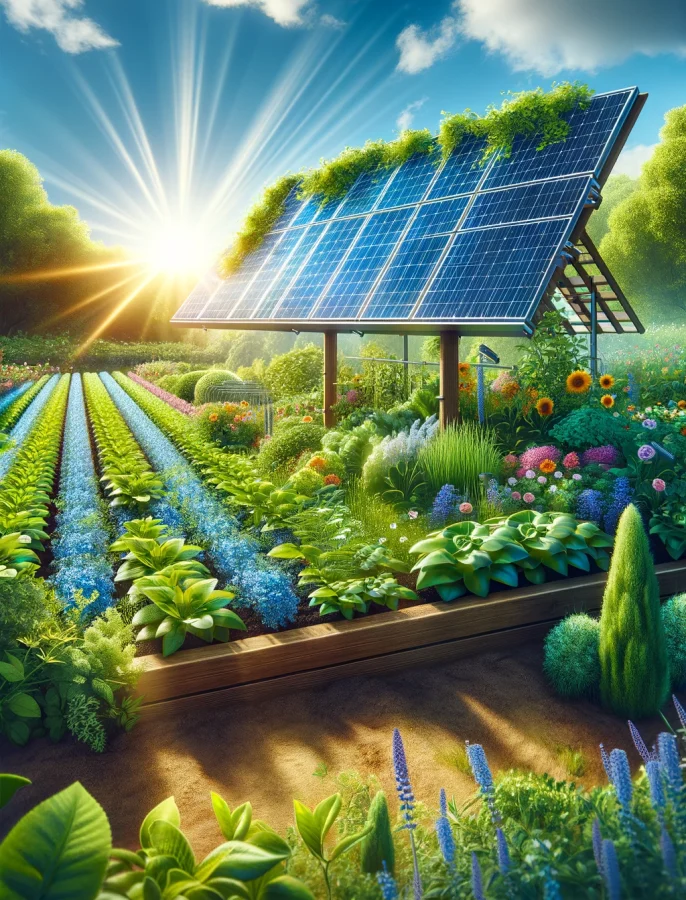
When considering renewable energy options for indoor gardening, it’s essential to focus on methods that are practical, efficient, and suitable for indoor environments.
While we cover a variety of methods and ideas here, we evaluate the practicality of solar energy and small wind generators, which are the most relevant options for indoor gardeners.
Solar Energy:
- Practicality: Solar energy is highly practical for indoor gardening. Solar panels can be installed on rooftops or balconies to capture sunlight and convert it into electricity. This electricity can then be used to power grow lights, fans, and other equipment necessary for indoor gardening.
- Efficiency: Solar panels are becoming increasingly efficient and cost-effective. Advances in technology have led to more compact and powerful solar panels that can generate sufficient energy even in limited spaces.
- Suitability: Solar energy is particularly suitable for indoor gardening because it provides a clean and sustainable source of power. It’s especially beneficial for gardens located in areas with ample sunlight.
Small Wind Generators:
- Practicality: Small wind generators can be practical for indoor gardening if the garden is located in an area with consistent wind flow. These generators can be mounted on rooftops or balconies to capture wind energy and convert it into electricity.
- Efficiency: The efficiency of small wind generators depends on the wind speed and the design of the turbine. In areas with strong and steady winds, small wind generators can be a reliable source of energy.
- Suitability: While small wind generators can be suitable for some indoor gardens, they are generally less common than solar panels. They are best suited for locations with high wind speeds and open spaces that allow for unobstructed airflow.
In conclusion, solar energy is the most practical and suitable renewable energy method for indoor gardeners due to its efficiency, availability, and ease of installation.
Small wind generators may be an option for those in windy areas, but they are generally less common and may require more specific conditions to be effective.
Indoor gardeners should assess their specific needs and local conditions to determine the best renewable energy solution for their garden.
Solar Energy Solutions
Solar energy is a clean and sustainable power source that can be harnessed to operate various garden systems.
From lighting to irrigation, solar panels offer an eco-friendly way to keep your garden thriving.
Here, we explore some practical solar energy solutions for gardens.
Solar Panels for Powering Garden Lights and Equipment
Solar panels can be installed in gardens to power lights, water pumps, and other equipment.
By converting sunlight into electricity, solar panels provide a renewable energy source that reduces reliance on the grid and lowers energy costs.
Garden lights powered by solar panels are especially popular, as they automatically turn on at dusk and off at dawn, providing illumination without the need for manual operation.
DIY Solar-Powered Greenhouse Watering System
A solar-powered greenhouse watering system is an efficient way to ensure your plants receive consistent watering without wasting resources.
By using solar panels to power a pump, water can be distributed throughout the greenhouse according to a set schedule.
This system not only conserves water but also reduces the labor involved in manual watering.
Homemade Solar Panels for Standby Electronics
Creating homemade solar panels for standby electronics like sensors or small fans is a cost-effective way to incorporate renewable energy into your garden.
With basic materials and some DIY skills, you can build solar panels that provide power for essential garden electronics, ensuring they operate even during power outages.
Solar-Powered Electric Mower for Eco-Friendly Lawn Maintenance
A solar-powered electric mower is an excellent choice for eco-conscious gardeners.
These mowers run on electricity generated by solar panels, eliminating the need for gasoline and reducing emissions.
Solar-powered electric mowers are quieter and more environmentally friendly than traditional mowers, making them a great option for sustainable lawn maintenance.
By adopting these solar energy solutions, gardeners can create more sustainable and efficient gardens that harness the power of the sun.
Wind Energy Innovations
Wind energy is a renewable resource that can be harnessed to generate electricity for gardens.
By utilizing small-scale wind turbines, gardeners can tap into the power of the wind to operate lights, pumps, and other garden equipment.
Here, we explore some innovative wind energy solutions for gardens.
Small-Scale Wind Turbines for Garden Electricity Generation
Small-scale wind turbines are designed for residential or garden use and can be an effective way to generate electricity from the wind.
These turbines can be mounted on a pole or rooftop and connected to a battery storage system to provide power for garden lights, irrigation systems, and other equipment.
By harnessing the wind, gardeners can reduce their reliance on grid electricity and lower their energy bills.
DIY Wind Turbine Projects from Repurposed Car Alternators
For those interested in DIY projects, building a wind turbine from repurposed car alternators can be a cost-effective way to generate renewable energy for the garden.
These projects involve assembling a rotor, blades, and a generator (such as a car alternator) to create a functional wind turbine.
By following online tutorials and guides, gardeners can construct their own wind turbines and contribute to a more sustainable garden ecosystem.
Incorporating wind energy innovations into garden design not only promotes sustainability but also provides a sense of accomplishment for gardeners who embrace renewable energy solutions.
By exploring small-scale wind turbines and DIY wind turbine projects, gardeners can harness the power of the wind to support their gardening endeavors.
See wind turbines for homes at Amazon.com: wind turbines for homes
Geothermal Energy Applications
Geothermal energy harnesses the consistent temperature of the earth to provide heating and cooling solutions.
This renewable energy source can be particularly beneficial for gardens, especially in regulating temperatures for greenhouses or garden structures.
Here, we delve into the applications of geothermal energy in gardening.
Utilizing the Earth’s Consistent Temperature for Heating and Cooling
The earth’s subsurface maintains a relatively constant temperature throughout the year, making it a reliable source of heat in winter and cooling in summer.
By tapping into this geothermal energy, gardeners can efficiently regulate the temperature of their greenhouses or garden structures.
This can extend the growing season, protect plants from extreme temperatures, and create a more controlled environment for plant growth.
DIY Ground Source Heat Pump for Garden Temperature Regulation
A ground source heat pump is a system that utilizes the earth’s stable temperature to heat or cool a space.
Gardeners can install a DIY ground source heat pump to regulate the temperature of their greenhouse or garden area.
This involves burying a network of pipes underground through which a fluid circulates, absorbing or dissipating heat as needed.
While this project requires some technical knowledge and investment, it can significantly reduce energy costs and improve the sustainability of your garden.
Geothermal energy applications in gardening offer an eco-friendly way to maintain optimal growing conditions.
By leveraging the earth’s consistent temperature, gardeners can create a more sustainable and productive garden environment.
Kinetic Energy Projects
Kinetic energy projects are an innovative way to generate renewable energy through human effort.
These projects harness the energy produced by physical activities, such as pedaling a bike or using a manual washing machine, to power devices or perform tasks.
Here, we explore some kinetic energy projects that can be implemented in gardens.
Energy-Free Washing Machine Powered by Human Effort
WonderWash Portable Washing Machine for Apartment & Tiny Spaces – Manual Hand Clothes Washer
An energy-free washing machine is a simple yet effective kinetic energy project.
This device typically consists of a drum or barrel, a handle or pedal mechanism, and a system for agitating the water and clothes.
By manually turning the handle or pedaling, gardeners can wash their clothes without the need for electricity.
This project not only conserves energy but also provides a sustainable solution for off-grid living or emergency situations.
Bike Generators for Charging Batteries and Electronic Devices
Bike generators are another example of kinetic energy projects. By attaching a generator to a stationary bike, gardeners can convert their pedaling motion into electrical energy.
This energy can be used to charge batteries, power lights, or run small electronic devices.
Bike generators are a great way to stay fit while also producing clean, renewable energy for garden needs.
Both of these kinetic energy projects offer a sustainable and eco-friendly way to generate power.
By incorporating energy-free washing machines and bike generators into their gardens, gardeners can reduce their reliance on traditional energy sources and embrace a more sustainable lifestyle.
Biogas Utilization
Biogas utilization is a sustainable way to convert garden waste into energy.
This process involves the anaerobic digestion of organic materials, such as plant trimmings, food scraps, and animal manure, to produce biogas.
The biogas can then be used for heating, cooking, or generating electricity. Here, we explore how gardeners can implement biogas utilization in their gardens.
Converting Garden Waste into Biogas for Energy Production
Gardeners can create a simple biogas digester to convert garden waste into biogas. This typically involves a sealed container where organic waste is mixed with water and allowed to decompose in the absence of oxygen.
The decomposition process produces biogas, which can be captured and used as a renewable energy source.
By using a biogas digester, gardeners can reduce waste, produce natural fertilizer (in the form of digested slurry), and generate clean energy for their homes or gardens.
Biogas utilization offers a practical solution for gardeners to manage waste and produce renewable energy.
By embracing this technology, gardeners can contribute to a more sustainable and self-sufficient gardening practice.
Water Energy Techniques
100 Gallon Collapsible Rain Barrel, Rainwater Collection System with 2 Spigots
Water energy techniques involve using water as a renewable energy source for irrigation and heating in gardens.
By harnessing rainwater and solar power, gardeners can create sustainable systems that reduce reliance on traditional water and energy sources.
Here, we delve into two practical water energy techniques for gardens.
Harnessing Rainwater with Solar-Powered Pumps for Irrigation
Solar-powered pumps can be used to harness rainwater for irrigation, providing an eco-friendly solution for watering plants.
Gardeners can collect rainwater in barrels or tanks and use solar-powered pumps to distribute it through their irrigation systems.
This technique not only conserves water but also utilizes renewable solar energy, making it a sustainable choice for garden irrigation.
DIY Solar Water Heating Systems for Garden Use
A DIY solar water heating system can be used to warm water for various garden applications, such as heating a greenhouse or providing warm water for plant care.
This system typically involves solar collectors that absorb sunlight and transfer the heat to water in a storage tank.
By using a solar water heating system, gardeners can reduce their energy consumption and take advantage of free solar energy to maintain optimal temperatures for plant growth.
By implementing water energy techniques like solar-powered pumps and solar water heating systems, gardeners can create more sustainable and self-sufficient gardens that harness the power of water and solar energy.
Innovative Cooking Methods
Innovative cooking methods using solar energy offer sustainable alternatives for outdoor cooking and food preservation.
Solar ovens and cookers allow you to harness the power of the sun to cook meals and snacks, while DIY solar food dehydrators provide a way to preserve garden produce without the need for electricity.
Here, we explore these eco-friendly cooking methods.
Solar Ovens and Cookers for Sustainable Outdoor Cooking
Solar ovens and cookers use reflective materials to concentrate sunlight and generate heat for cooking.
These devices can reach high temperatures, making them suitable for baking, boiling, and roasting.
Solar cookers are portable and easy to use, making them perfect for camping, picnics, or backyard cooking.
By using solar ovens, gardeners can reduce their carbon footprint and enjoy the benefits of renewable energy in their culinary adventures.
DIY Solar Food Dehydrator for Preserving Garden Produce
A DIY solar food dehydrator is an effective tool for preserving fruits, vegetables, and herbs from the garden. By using the sun’s energy to remove moisture from food, a solar dehydrator extends the shelf life of produce and retains its nutritional value.
Gardeners can build their own dehydrator using simple materials like wood, plastic, and mesh, creating a sustainable way to enjoy their garden bounty all year round.
Incorporating innovative cooking methods like solar ovens and food dehydrators into your gardening routine not only promotes sustainability but also adds a fun and creative element to outdoor cooking and food preservation.
Energy Storage and Management
Energy storage and management are crucial components of a sustainable garden that utilizes renewable energy sources.
By implementing battery banks and charging stations, gardeners can store excess energy for later use.
Additionally, adopting efficient energy management practices ensures that energy is used optimally, reducing waste and maximizing sustainability.
Here, we delve into these aspects of energy storage and management.
Battery Banks and Charging Stations for Storing Renewable Energy
Battery banks are systems of interconnected batteries used to store electrical energy generated from renewable sources like solar panels or wind turbines.
By setting up a battery bank, gardeners can store surplus energy during peak production times and use it when energy generation is lower, such as during cloudy days or at night.
Charging stations equipped with solar panels or connected to the battery bank can provide a convenient way to charge garden tools, mobile devices, and other electronics using stored renewable energy.
Efficient Energy Management Practices for Garden Sustainability
Efficient energy management involves monitoring and controlling energy usage to ensure that it is used effectively and sustainably. Gardeners can adopt practices such as:
- Energy Audits: Regularly assess energy consumption in the garden to identify areas where efficiency can be improved.
- Smart Controllers: Using smart devices to automate and optimize the operation of irrigation systems, lighting, and other garden equipment based on real-time data and weather conditions.
- Energy-Efficient Equipment: Choosing energy-efficient tools and appliances that consume less power without compromising performance.
By focusing on energy storage and management, gardeners can create a more resilient and sustainable garden ecosystem that maximizes the benefits of renewable energy sources.
Renewable Energy Ideas for Gardens FAQs
In this section, we answer some common questions about incorporating renewable energy into gardens.
From making a garden sustainable to choosing the best energy sources, we cover key topics to help you create an eco-friendly garden space.
Q. How do you make a garden sustainable?
A. To make a garden sustainable, use minimal natural resources and human intervention. Practice organic gardening, use native plants, and implement methods like Three Sisters planting. Prepare soil with compost and mulch, and aim for zero waste by recycling garden waste.
Q. What is an energy-efficient garden?
A. An energy-efficient garden minimizes energy and water usage. It uses solar-powered equipment, and efficient irrigation systems, and includes plants that require less water and maintenance.
Q. What is an example of 10 renewable resources?
A. Ten renewable resources include solar energy, wind energy, geothermal energy, hydropower, biomass, biofuels, wave energy, tidal energy, hydrogen, and ambient heat.
Q. What is the cheapest renewable energy source for the home?
A. Solar energy is often considered the cheapest renewable energy source for homes, especially with decreasing costs of solar panels and incentives like tax credits.
Q. What is the cheapest and cleanest energy source?
A. Wind energy is often cited as the cheapest and cleanest energy source, with low operating costs and minimal environmental impact.
Q. What is the easiest renewable energy source?
A. Solar energy is considered the easiest renewable energy source to implement, as solar panels can be easily installed on rooftops or in open spaces.
Q. How much energy does indoor farming use?
A. Indoor farming can use a significant amount of energy, especially for lighting and climate control. However, using energy-efficient systems and renewable energy sources can reduce consumption.
Q. How can farmers use renewable energy?
A. Farmers can use renewable energy by installing solar panels, wind turbines, or biomass systems to power their operations, reduce costs, and minimize environmental impact.
Q. What is the best renewable energy source for a farm?
A. The best renewable energy source for a farm depends on its location and needs. Solar energy is widely applicable, while wind energy can be ideal in windy areas, and biomass energy can be useful for farms with organic waste.
Q. Can vertical farms use solar panels?
A. Yes, vertical farms can use solar panels to power their lighting and climate control systems, making them more sustainable and reducing energy costs.
Q. Can you power a grow room with solar panels?
A. Yes, you can power a grow room with solar panels, which can provide a clean and sustainable energy source for lighting and other equipment.
Q. Can you grow crops under solar panels?
A. Yes, it’s possible to grow crops under solar panels in a practice called agrivoltaics. This can provide shade for the crops and maximize land use.
Conclusion: Renewable Energy Ideas for Gardens
In this guide, we’ve explored various renewable energy ideas for gardens, highlighting how gardeners can create more sustainable and eco-friendly spaces.
From solar-powered irrigation systems to wind turbines and geothermal heating, the possibilities are vast and impactful.
Recap of Renewable Energy Ideas for Gardens
We discussed several renewable energy solutions, including:
- Solar energy for powering garden lights and equipment.
- Wind energy innovations like small-scale turbines for electricity generation.
- Geothermal energy applications for temperature regulation.
- Kinetic energy projects such as energy-free washing machines and bike generators.
- Biogas utilization to convert garden waste into energy.
- Water energy techniques like harnessing rainwater with solar-powered pumps.
- Innovative cooking methods using solar ovens and food dehydrators.
- Energy storage and management through battery banks and efficient practices.
Encouragement to Adopt Sustainable Practices for a Greener Future
Adopting renewable energy in gardens is a step towards a greener and more sustainable future.
By embracing these practices, gardeners can reduce their environmental impact, save on energy costs, and contribute to a healthier planet.
We encourage you to explore these renewable energy ideas and integrate them into your gardening routine, paving the way for a more sustainable and eco-friendly approach to gardening.
Learn more: Eco-Friendly Gardening
Resources: Tutorials and Guides for DIY Renewable Energy Projects
Here are some resources to help you get started on DIY renewable energy projects for your garden:
DIY Solar Phone Charger – Learn how to build a solar-powered charger for your cell phone using simple materials. This project is great for off-grid power when you have sunlight.
Solar Food Dehydrator – Follow these instructions to harness the sun’s power to preserve food at home using a DIY solar dehydrator.
Homemade Solar Water Distiller – This tutorial walks you through the process of purifying water with a solar water distiller, ensuring you have access to clean water whenever necessary.
Use Your Muscles to Charge Your Phone – Check out this simple charger that uses muscle power to charge your phone, useful in emergency situations.
Free Professional Wind Turbine Blade – Explore this project to build a professional wind turbine blade for generating electricity from wind.
Solar Power Supply V3.0 – Learn how to create a solar power supply to charge and power your devices.
For more information and detailed instructions on these projects, visit the provided links.
These resources offer a variety of renewable energy projects that you can tackle over a weekend or as a longer-term project to make your garden more sustainable and eco-friendly.
Related Content
Visit my Amazon Influencer Page for videos and gardening products Grow Your Own Garden






